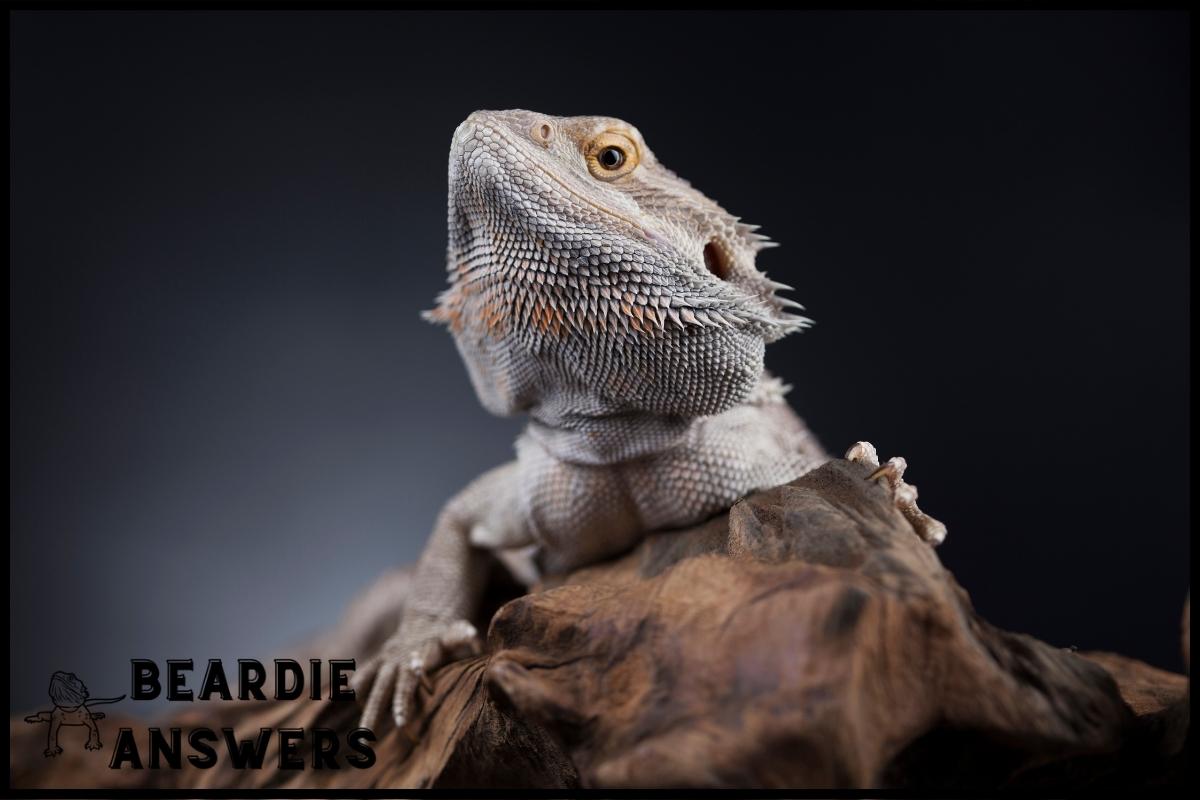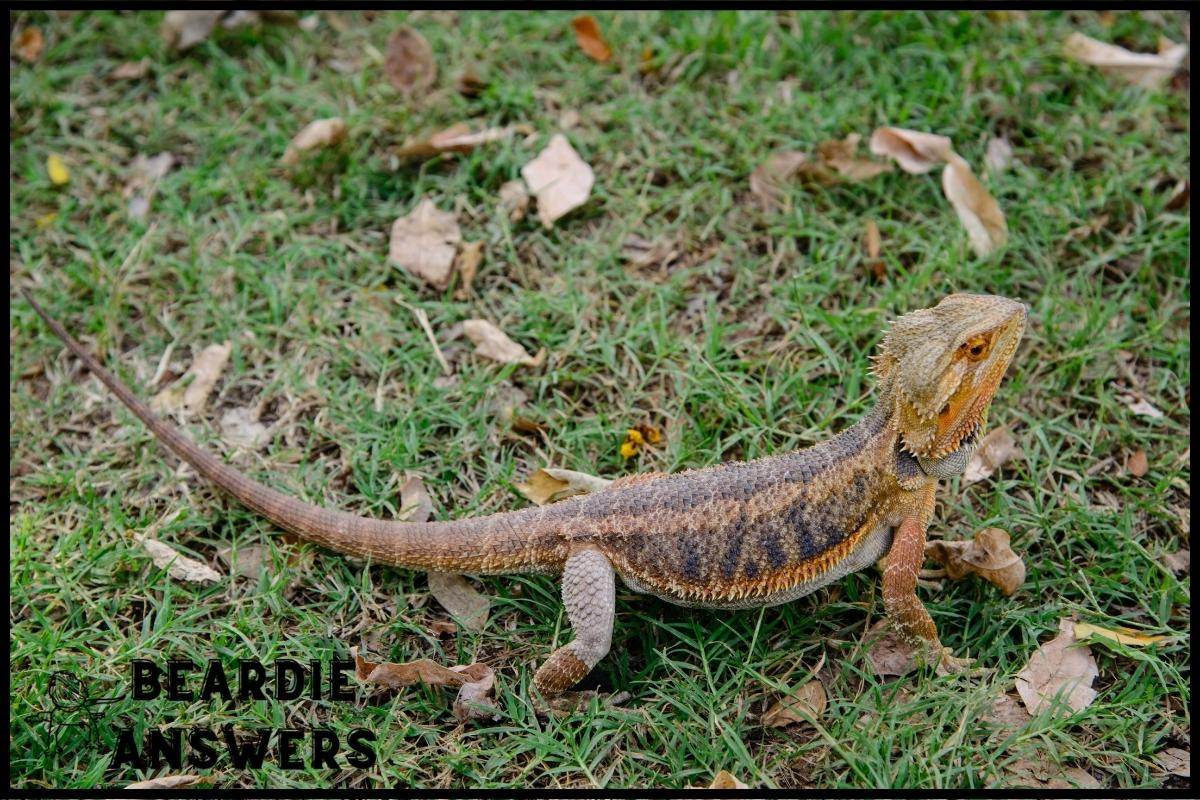A bearded dragon’s diet should consist mainly of vegetables and supplemented with insects. Offer a variety of dark, leafy greens such as collards, kale, and mustard greens. Some good vegetable options are carrots, squash, and sweet potatoes.
What You'll Learn
Vegetables: What To Offer
Feeding a bearded dragon is an important part of caring for this unique reptile. Understanding the right diet to offer can be tricky, but it’s essential in order to ensure your pet stays healthy and happy.
A good rule of thumb when crafting their meals is that 80% should consist of vegetables with the remaining 20% being made up of insects.
Vegetables are an excellent source of nutrition for a bearded dragon, especially those that are calcium rich. Spinach, collard greens, mustard greens and turnip greens are all great options as they have high levels of calcium which helps promote healthy bones and muscles in reptiles. It’s also important to give them variety choices so they don’t get bored – some other veggies you may want to consider include carrots, squash, bell peppers, sweet potatoes and even fruits like apples or pears.
Providing a selection of different vegetables gives your pet plenty of options to choose from while making sure they’re getting enough nutrients from their food. The next step is figuring out which insects to feed them….
Insects: What To Offer
Now that you know what type of vegetables to offer your bearded dragon, it’s time to dive into the next part of their diet – insects. Insects should make up about 20% of a bearded dragon’s diet and provide them with essential vitamins, minerals, and proteins.
Before offering these insects to your beloved pet, there are a few things you must consider:
- Gut loading – Many insect species feed on plants or grains before being fed to reptiles. This helps increase the nutritional value for the reptile as they consume the insect.
- Calcium sources – When buying crickets or other types of feeder insects, look for those dusted with calcium powder in order to ensure your beardie is getting enough calcium in their diet.
- Variety – Offer different kinds of insects so that your beardie gets more diverse nutrition from their meals, such as mealworms and wax worms.
In terms of feeding schedule, be sure to give your beardie food every day according to their size and age requirements. Additionally, don’t forget to supplement any fresh fruits or veggies with bee pollen twice per week.
Feeding Schedule
Feeding your bearded dragon should be done on a regular schedule. Here is an example of what that could look like:
|Day | Vegetables | Insects |
|—-|————|———-|
|Mon | Carrot
Butternut Squash
Collard Greens
Mustard Greens
Kale | Superworms
Crickets
Silk Worms |
|Tues | Sweet Potato
Mushrooms
Broccoli
Zucchini
Turnip Greens | Dubia Roaches
Black Soldier Fly Larvae (BSFL) |
Wed | Red Bell Pepper
Romaine Lettuce
Dandelion Greens
Endive
Radicchio | Wax Worms |
Thur | Parsnip
Spinach
Green Beans
Yellow Squash | Hornworms |
Fri | Celery Sticks
Okra
Artichokes
Beet
Greens
Mealworms |
It’s also important to monitor their water intake and make sure the enclosure has proper temperature control for optimal digestion. Additionally, it’s best to provide some variety in the types of insects offered each day as well. With this feeding schedule, you can get started providing your bearded dragon with the nutrition they need. Supplementation may be needed depending on age or health status; more information about supplementation will follow in the next section.
Supplementation
Supplementation is an important part of a healthy diet for bearded dragons. It’s essential to meet the vitamin needs in order to ensure proper growth and development, as well as prevent any potential deficiencies.
When supplementing your dragon’s diet, it’s important to use only products specifically designed for reptiles:
Calcium Supplements
These are generally added daily or every other day depending on the age of your dragon and their dietary needs. Make sure to choose one that is free from phosphorus and has added Vitamin D3.
- Dust food with calcium powder prior to feeding insects.
- Provide cuttlebone in the cage at all times for them to nibble on if they wish (they will usually ignore it).
Vitamins
A multivitamin should be offered once a week; however, do not oversupplement vitamins since too much can cause health problems such as kidney stones.
Hydration Needs
Water dishes should always be available so your dragon can hydrate whenever needed – particularly after eating dry foods like vegetables and pellets. Additionally, mist the enclosure with water twice per day when possible for additional hydration opportunities.
In addition to supplementation, there are many food safety considerations you’ll need to keep in mind when feeding your bearded dragon which we’ll discuss next.
Food Safety Considerations
Feeding a bearded dragon is like taking a journey. You want to ensure that the route you take is full of nutrient-rich food, fresh water and plenty of variety.
Along the way, there are certain safety considerations that should be taken into account in order to make sure your pet enjoys a balanced diet.
The key to success when feeding a bearded dragon is offering variety in their diet. A good balance would include 80% vegetables and 20% insects.
Leafy greens such as kale, collard greens, turnip tops and mustard greens can all make up part of the vegetable portion while crickets, mealworms or wax worms will satisfy the insect requirement. However, it’s important not to offer too much protein as this can lead to health problems for your pet down the line.
It’s also essential to check the quality of water being provided regularly – does it look clean? Does it have an unusual color or smell? If so, then replace it with fresh drinking water before giving it to your bearded dragon. Doing so ensures they stay hydrated and healthy on their dietary voyage!
Troubleshooting Common Issues
Feeding a bearded dragon can be challenging at times, especially when they become picky eaters. It’s important to keep up with their diet and ensure that they are getting the right amount of vegetables and insects in order to remain healthy.
Here’s how you can troubleshoot common issues:
Handling Picky Eaters:
If your bearded dragon is being fussy about what it eats, try offering different types of food on a regular basis. Experiment with different textures, sizes, colors, and flavors so that your pet won’t get bored of eating the same things over again. Additionally, make sure not to feed them too often or else they may lose interest in their meals altogether.
Digestion Problems:
When feeding a bearded dragon, always monitor its intake closely. Too much food can cause indigestion or even other health concerns such as obesity. Pay close attention to the size of each insect so that it isn’t too big for your pet to digest properly. Also, make sure all vegetables are chopped into small pieces before being served; this will help prevent choking hazards as well as promote easier digestion.
It’s essential to stay aware of any changes in behavior or appetite while looking out for signs of illness or malnutrition in order to ensure your bearded dragon stays happy and healthy!
Conclusion
In conclusion, it is important to remember that a bearded dragon’s diet should consist of 80% vegetables and 20% insects. Feeding your beardie the right amount of food at the right time can help them stay healthy and happy.
Research indicates that an adult bearded dragon needs to be fed every one to two days in order to meet their nutritional requirements.
I hope this article has enlightened you on what types of food to feed your bearded dragon as well as how often and when they need to eat.
Additionally, with proper supplementation and safety considerations taken into account, you can ensure that your pet lives a long and healthy life – up to 10 years or more!

Hi! My name is Bryan, I am the “one behind the words” here are BeardieAnswers.com. I believe that providing quality care and nutrition is the best way to ensure the health of your pet. Every beardie is special and deserves the best care and attention. If you have questions about your bearded dragon, please don’t hesitate to ask! View My Full Author Page




